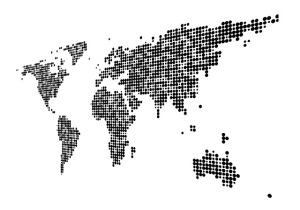E1 – Exemplify professionally-informed, growth-centered practice. To me, this standard means that teachers are continually developing professional practices which are evaluated through feedback and personal reflection. This ties very closely with ISTE standard 5 for teachers, which states that “teachers continue to improve their professional practice, model lifelong learning, and exhibit leadership in their school and professional community by promoting and demonstrating the effective use of digital tools and resources” (ISTE, 2015). Because I feel that it is important with regards to both of these standards that I search for professional communities to participate in, my question for this standard was:
What kinds of digital learning communities can I participate in that provide a place for reflection and feedback, as well as exploration of creative applications of technology (among other topics) for improving student learning and my instructional practices?
One issue with attempting to develop growth-centered practice and lifelong learning is that teachers often don’t have the time or resources for professional development and peer evaluations. Unfortunately, “many educators work alone, with little interaction with professional colleagues or experts in the outside world” (USDE, 2010), making it difficult to grow professionally and improve teaching practices. Technology has, however, provided a wonderfully convenient solution by providing thousands of networks and communities for teachers and other professionals to participate in. These online learning communities can “break through educators’ traditional isolation, enabling them to collaborate with their peers and leverage world-class experts to improve student learning” (USDE, 2010).
With this in mind, I searched through several forums to find a few learning communities that I could participate in and learn from. One such community is called Classroom 2.0, a learning community for educators who are also interested in integrating technology into their practice for a connected classroom. This community plays host to over 80,000 educators from around the world, providing a global learning network that I have chosen to be a part of. I can research topics of interest, see what is “hot” and what events are upcoming that I may be able to attend-some of which are live, some of which are online, so I can choose whichever is most convenient-and start conversations about topics or issues that come up during my classroom experiences.
Another great option for continuing learning and collaboration was shared by my learning circle member Jack Marshall. His resource, November Learning, an organization that provides a large variety of resources devoted to “implement change in schools and revolutionize teaching and learning through the application of technology” (Marshall, 2015). He also shared a list of educator hashtags for Twitter, something I found highly useful, as I plan to sign up for a Twitter account and begin participating in the educator community there. Not only will this give me yet another community to be a part of, it will help me to stay tuned in to technological trends, learn a new resource that could be valuable in the classroom, and give me a place to start searching for issues as they appear in my practice. Each community I found and joined during this module will benefit both my teaching practices and ultimately my students as I grow in my profession and continue to be a lifelong learner.
Geralt. (2014). Global Networking. Retrieved from http://pixabay.com/en/globe-network-social-networking-109274/
ISTE (2015). ISTE standards: Teachers. Retrieved from: http://www.iste.org/docs/pdfs/20-14_ISTE_Standards-T_PDF.pdf
Marshall, J. (2015 March 7). ISTE Standard 5 [post in private community]. Retrieved from https://plus.google.com/u/0/communities/111058430962704146204/stream/b10e9199-7536-4190-b7ce-f6adf9c9027e
USDE (2010). Transforming American education: Learning powered by technology. National Education Technology Plan 2010. Retrieved from https://bbweb-prod.spu.edu/bbcswebdav/pid-1022729-dt-content-rid-2032329_1/courses/EDTC6433W2015/EDTC6433_A9201451_ImportedContent_20140929075347/2010%20Manzo.pdf

